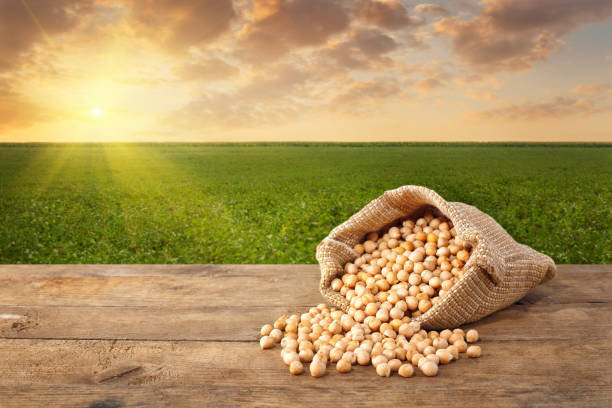The global chickpeas market is experiencing mounting turbulence as farmer organizations raise alarms over low-cost imports, driving sharp price drops across major domestic markets. During the ongoing kharif marketing season, imported chickpeas—brought in mainly from Australia and Tanzania at significant discounts—have placed immense downward pressure on local pricing, threatening the economic welfare of domestic producers. Farmers across key producing regions have seen mandi rates fall precipitously, with quotes nosediving from $464 to as low as $432 per metric ton in just a week, sparking palpable unrest throughout the value chain. This price collapse has already swayed some growers to pivot their sowing choices from chickpeas to alternatives like moong and other pulses, questioning the sustainability of current import policies amidst a steady demand outlook.
Industry analysts and producer bodies alike are urging the government to reconsider ongoing import programs, emphasizing that the annual chickpea production estimate of 13.2 million tons for 2024–25—although slightly lower than last year—should fulfill domestic requirements if managed appropriately. The call for enhanced local procurement and implementation of minimum support price (MSP) programs has grown louder, as domestic prices struggle to align with MSP benchmarks. Going forward, persisting import flows risk triggering deeper structural changes in local pulse cultivation. This scenario underscores a volatile outlook for both prices and production areas, making market navigation increasingly complex for traders and producers alike.
Exclusive Offers on CMBroker

Chickpeas dried
count 75-80, 8 mm
FOB 0.97 €/kg
(from MX)

Chickpeas dried
count 42-44, 12 mm
FOB 1.50 €/kg
(from MX)

Chickpeas dried
count 60-62, 8 mm
FOB 1.03 €/kg
(from IN)
📈 Latest Market Prices on Key Exchanges
| Origin | Type | Size (mm) | FOB Price (€/kg) | Previous Price (€/kg) | Updated |
|---|---|---|---|---|---|
| MX | Chickpeas dried | 8 (75-80 ct) | 1.23 | 1.23 | 2025-08-02 |
| MX | Chickpeas dried | 12 (42-44 ct) | 1.74 | 1.74 | 2025-08-02 |
| IN | Chickpeas dried | 8 (60-62 ct) | 1.29 | 1.29 | 2025-08-02 |
| IN | Chickpeas dried | 9 (58-60 ct) | 1.30 | 1.30 | 2025-08-02 |
| IN | Chickpeas dried | 10 (46-48 ct) | 1.34 | 1.34 | 2025-08-02 |
| IN | Chickpeas dried | 11 (44-46 ct) | 1.36 | 1.36 | 2025-08-02 |
| IN | Chickpeas dried | 12 (42-44 ct) | 1.35 | 1.35 | 2025-08-02 |
- Weekly change: Prices have remained steady across major quoted types; however, spot mandi prices showed sharp declines in INR/USD terms based on domestic market pressure.
- Market sentiment: Bearish, with concerns about continued price suppression if imports persist at current levels.
🌍 Supply & Demand Drivers
- Farmer reactions: Reports of farmers shifting acreage away from chickpeas due to sustained low prices.
- Import impact: Cheap imports from Australia and Tanzania (offered at $378–384/ton) undercutting local rates ($432–464/ton), leading to price depression in domestic markets.
- Production estimate: Ministry of Agriculture pegs 2024–25 output at 13.2 million tons, a modest decline from last year, while demand remains stable.
- Policy debate: Strong calls for a temporary halt to imports and boosting local procurement under MSP; risk of escalation if government response lags.
📊 Market Fundamentals
- Inventory position: Global inventories comfortable, with major exporters (Australia, India, Mexico) having sufficient stock; slight reduction in Indian output offset by imports.
- Demand outlook: Stable, with traditional food sector and processing segments showing steady off-take.
- Acreage trends: Expectation that sowing area may drop for chickpeas if prevailing price suppression and import trends persist into next season.
- Speculative positioning: Bearish bias observed among commercial traders amid ongoing price declines and policy uncertainty.
🌦️ Weather and Crop Yield Outlook
- India: The monsoon has been on track, but above-average rainfall in some areas has delayed sowing and could affect yield quality if it persists.
- Australia: Key production regions facing variable weather; recent reports note adequate soil moisture, but a spell of dryness is forecast in Western Australia. Watch for late-season stresses.
- Mexico: Conditions remain neutral, with normal temperatures and timely rainfall supporting stable pod development.
Weather risks remain moderate overall but warrant close monitoring as any late shocks could alter the supply outlook.
🌐 Global Production and Stock Comparison
| Country | 2023/24 Production (MT) | 2024/25 Estimate (MT) | Comments |
|---|---|---|---|
| India | 13.4m | 13.2m | Slight decrease; import policy in focus |
| Australia | 1.0m | 1.1m | Increased acreage and strong performance |
| Mexico | 276k | 275k | Stable year-on-year |
| Turkey | 630k | 625k | Marginal decrease |
| Global | 15.9m | 15.8m | Effectively flat; stocks comfortable |
📆 Trading Outlook & Recommendations
- Buyers may see further downside opportunities if imports persist, but upside risks remain if government intervenes or weather conditions disrupt output.
- Sellers and producers should monitor MSP program changes and policy updates closely, and be ready to pivot crops if price suppression continues into the next season.
- Traders should track daily auction trends and international offers, especially from Australia and Tanzania, for arbitrage opportunities.
- Watch for potential short-covering rallies should import restrictions or procurement drives be announced.
📅 3-Day Regional Price Forecast (FOB, €/kg)
| Date | India (Delhi, 12mm) | Mexico (12mm) | Australia (Estimate, 12mm) |
|---|---|---|---|
| Aug 3 | 1.35 | 1.74 | 1.31 |
| Aug 4 | 1.35 | 1.74 | 1.31 |
| Aug 5 | 1.34 | 1.73 | 1.30 |
Note: Forecast assumes stable weather and continued import flows. Any sudden policy intervention could cause rapid price shifts.


